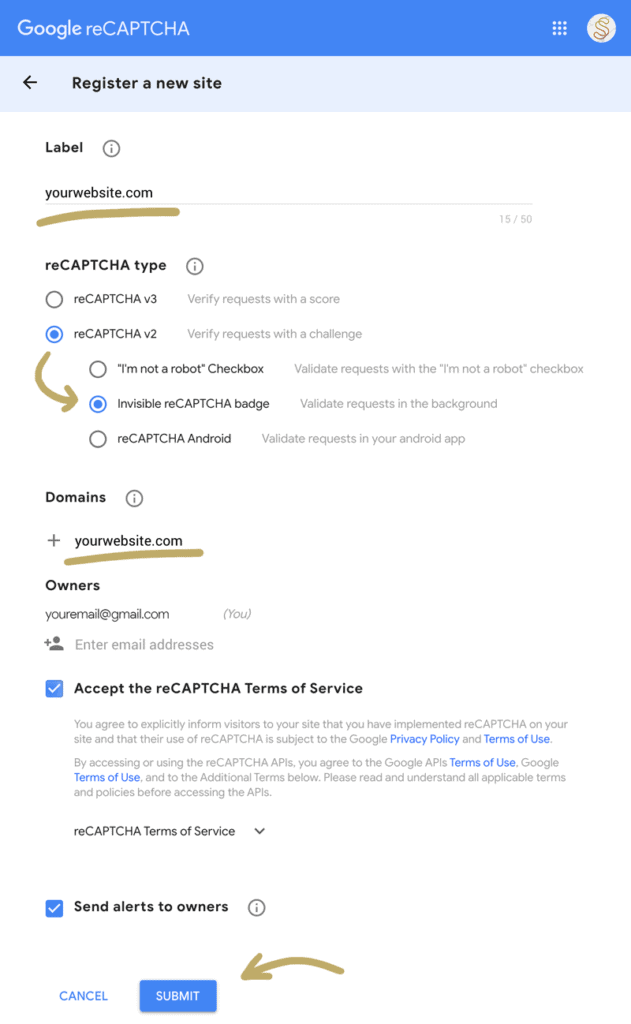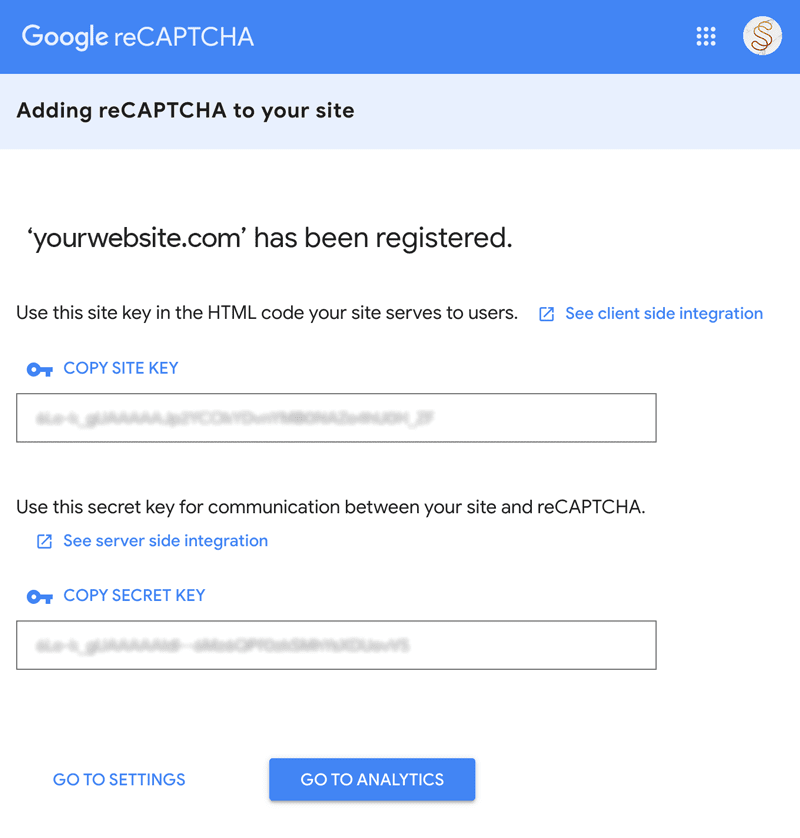What is Google reCaptcha?
Google’s reCAPTCHA allows you to add human verification technology to make your forms secure from spammers and bots.
There are three types of reCAPTCHA available for your forms: v2 Checkbox reCAPTCHA, v2 Invisible reCAPTCHA, and v3 reCAPTCHA.
Types of reCaptcha:
v2 Checkbox reCAPTCHA
This type of reCaptcha will display a checkbox that requires your user to tick to confirm they are human before submitting the form.
v2 Invisible reCAPTCHA (recommended)
When Invisible reCAPTCHA is used, the user won’t see any extra field within your form (no checkbox). A small badge is added to the lower right corner of the screen that links to Google’s terms of service and privacy policy. Just like the v2 Checkbox reCAPTCHA, v2 Invisible reCAPTCHA will in some cases ask the user to answer image-based questions to ensure they are not a spam bot.
v3 reCAPTCHA
Much like Invisible reCAPTCHA, in v3 reCAPTCHA the user will only see a small badge the lower right corner of the screen that links to Google’s terms of service and privacy policy. However, v3 reCAPTCHA will never display a captcha like the image question shown above. Instead, it runs completely in the background. To avoid asking for user interaction, Google will monitor the user’s behavior on your site to look for what it considers suspicious activity. Then, reCAPTCHA will assign them a score. You will decide the score in your form settings needed to allow your forms to submit. If a user’s reCAPTCHA score does not meet your requirements, they will have no way to submit your form. This is a major difference from the v2 reCAPTCHA options, which provide an opportunity for the user to prove that they are human.
Note: Each reCAPTCHA type requires a different set of keys, so if you later decide to switch types you will need to generate a new set of keys.
Set up reCAPTCHA in your Google account
You will need a Google account to access Google reCaptcha.
If you use gsuite for your emails, you will already have an account and can access these codes straight away. If you don’t already have a Google account, go ahead and set one up.
To generate the required keys, open:
Google’s reCAPTCHA landing page.
Once you’ve opened the reCAPTCHA landing page, you’ll need to click the Admin console button in the upper right corner to get started.

After clicking this button, you’ll be asked to sign into your Google account.
If you’ve never set up reCAPTCHA before, you’ll be directed straight to the reCAPTCHA setup form.

Follow these six steps to fill out the form:
1. Label: This is just for you, so enter any name that makes logical sense (most commonly the website name).
2. reCAPTCHA Type: Select the version of reCAPTCHA that you’d like to use (once you click v2 another menu will appear blow for you to select invisible reCaptcha).
3. Domains: Enter the URL where you’ll be using reCAPTCHA.
Do not include “http://www” at the start (for example, studiosudo.co.uk would be accepted, but https://studiosudo.co.uk or www.studiosudo.co.uk would not).
4. Owners: This should be your Google email address. Unless you know a specific reason to adjust this, leave as is.
5. Accept the reCAPTCHA Terms of Service: You must check this box to proceed.
6. Send alerts to owners: Unless you know a specific reason to turn this off, you can leave this box checked.
Once the form is complete, go ahead and click the Submit button.
If you have set up a reCAPTCHA with this account in the past, you’ll need to click the + (plus) icon to add a new site, and follow the steps above.
After registering, you should see a page with the keys for your website.

You’ll need to copy the Site Key and Secret Key and email them over to me so I can implement them into your contact forms. You can either use the form below or email me directly.
And that’s it!



